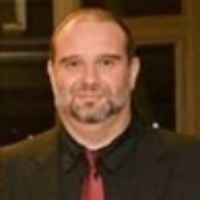Study on the Performance of Wave Energy Converters
A special issue of Journal of Marine Science and Engineering (ISSN 2077-1312). This special issue belongs to the section "Ocean Engineering".
Deadline for manuscript submissions: 10 June 2024 | Viewed by 1804
Special Issue Editors
Interests: fluid mechanics; heat transfer; design; renewable energy; computational fluid dynamics
Special Issues, Collections and Topics in MDPI journals
Special Issue Information
Dear Colleagues,
Ocean wave energy converters (WECs) have emerged as a promising technology for harnessing renewable energy from the vast resources of the ocean. As the world seeks to transition toward clean and sustainable energy sources, understanding the performance of WECs becomes crucial for optimizing their efficiency and reliability. This Special Issue aims to explore various aspects related to the performance of ocean wave energy converters. We invite researchers and experts from academia and industry to contribute their original research articles, reviews and case studies on this topic.
The topics of interest include, but are not limited to:
- Design and optimization of WECs: novel design concepts, modeling techniques and optimization strategies for improving the performance of WECs;
- Performance evaluation and monitoring: experimental and numerical methods for assessing the performance of WECs, including power generation, energy conversion efficiency and reliability;
- Wave resource assessment: studies focusing on characterizing and predicting the wave resource at different coastal regions and its impact on the performance of WECs;
- Control and operation strategies: advanced control algorithms and operational strategies for enhancing the performance and survivability of WECs under varying wave conditions;
- Environmental impact assessment: investigations on the potential environmental impacts of WECs, including their effects on marine ecosystems and mitigation measures.
Dr. Elizaldo Domingues Dos Santos
Dr. Liércio André Isoldi
Guest Editors
Manuscript Submission Information
Manuscripts should be submitted online at www.mdpi.com by registering and logging in to this website. Once you are registered, click here to go to the submission form. Manuscripts can be submitted until the deadline. All submissions that pass pre-check are peer-reviewed. Accepted papers will be published continuously in the journal (as soon as accepted) and will be listed together on the special issue website. Research articles, review articles as well as short communications are invited. For planned papers, a title and short abstract (about 100 words) can be sent to the Editorial Office for announcement on this website.
Submitted manuscripts should not have been published previously, nor be under consideration for publication elsewhere (except conference proceedings papers). All manuscripts are thoroughly refereed through a single-blind peer-review process. A guide for authors and other relevant information for submission of manuscripts is available on the Instructions for Authors page. Journal of Marine Science and Engineering is an international peer-reviewed open access monthly journal published by MDPI.
Please visit the Instructions for Authors page before submitting a manuscript. The Article Processing Charge (APC) for publication in this open access journal is 2600 CHF (Swiss Francs). Submitted papers should be well formatted and use good English. Authors may use MDPI's English editing service prior to publication or during author revisions.
Keywords
- ocean wave energy converters
- WEC
- performance evaluation
- ocean wave energy
- wave resource assessment
- marine renewable energy






